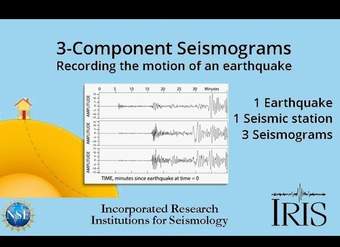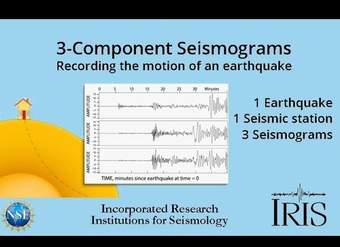3-component Seismograms—Capturing the motion of an earthquake. (Educational)
www.iris.edu/earthquake for more animations. Modern seismometers include 3 elements to determine the simultaneous movement in 3 directions: up-down, north-south,and east-west. Each direction of movement gives information about the earthquake. This animation shows both the movement of the three basic waves (P, S, and surface) and the effect of the waves on a building. The three seismograms produced by a modern seismograph station show that the P wave is more visible on the vertical component and the S wave amplitude is larger on the horizontal components. We emphasize that seismic waves traveling away from an earthquake occur everywhere, not just at seismic stations. Reviewed and narrated by Wendy Bohon, Informal education specialist, Incorporated Research Institutions for Seismology. Animated by Jenda Johnson, Earth Sciences Animated. Reviewed by Danielle Sumy, Incorporated Research Institutions for Seismology. Made possible by support from the National Science Foundation. Music: “On the Passing of Time”, Kevin MacLeod.
Describir el origen y la propagación, por medio del modelo ondulatorio, de la energía liberada en un sismo, considerando:
- Los parámetros que lo describen (epicentro, hipocentro, área de ruptura, magnitud e intensidad).
- Los tipos de ondas sísmicas (primarias, secundarias y superficiales).
- Su medición y registro (sismógrafo, escalas sísmicas).
- Sus consecuencias directas e indirectas en la superficie de la Tierra (como tsunamis) y en la sociedad.
- Su importancia en geología, por ejemplo, en el estudio de la estructura interna de la Tierra.
Tipo: Imágenes y multimedia / Videos
Curso: 1° Medio
Asignatura: Ciencias Naturales
Fuente o Colección: Youtube: CURRICULUM MINEDUC
Modalidad: Educación General



